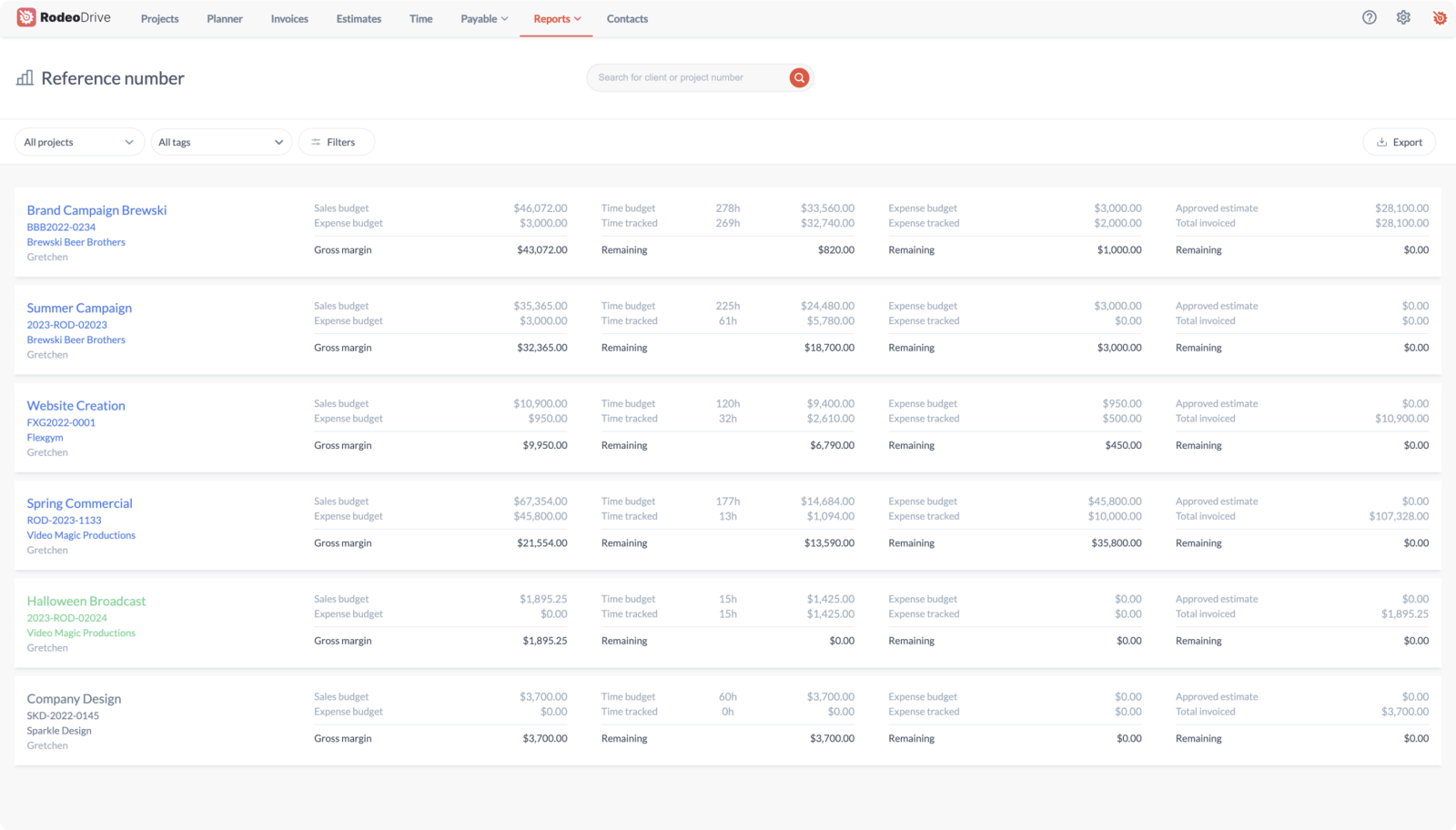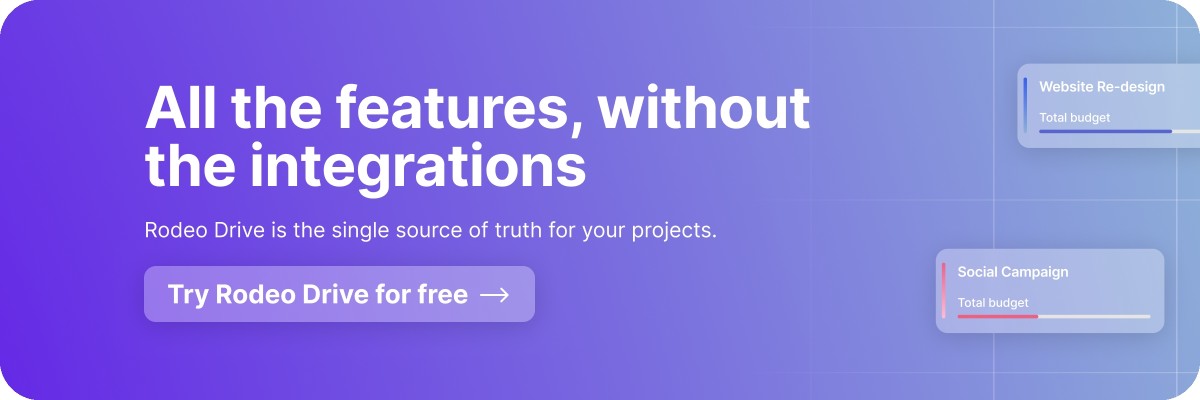How to Integrate OKRs Into Your Project Management Workflows
If you’re looking for a new goal-setting method to help track progress for your project management team, then you’re in the right place.
Many project managers find that adopting an OKR framework is an effective way to push their team beyond what they thought possible and align their work with organizational goals. OKRs can help your entire team feel part of the bigger picture and increase the likelihood that they’ll achieve success.
In this article, we’ll share everything you need to know about OKRs in project management, including OKR examples and steps for implementation.
What are project management OKRs?
OKR stands for Objectives and Key Results, and it’s a goal-setting framework that can help your team push themselves to new heights. In essence, OKRs require you to set a high-level objective and outline several results that can be used to measure your progress toward that overarching objective.
From a project management perspective, OKRs are an incredibly useful tool. Whereas most project management methodologies are solely focused on completing project tasks in order to deliver projects on time, OKRs are focused on higher-level, ambitious outcomes that you might not always achieve.
Because of this, failure to meet OKRs isn’t necessarily representative of job performance in most cases. OKRs are still an excellent way to boost team accountability and encourage your team members to take on new goals and initiatives.
Since OKRs and traditional project management methods rely on different sets of philosophies, using both simultaneously can help your team achieve even more.
Objectives
Your objective is the main outcome you want to achieve by setting this OKR. This might include things like reducing overspending or optimizing an internal process. Your objective should be pretty high level and challenging to attain.
Key results
When considering which key results fit with your objectives, you should ask yourself how you’ll know when you’re making progress toward that objective.
For instance, if your objective is to improve employee retention, your key results might include things like improving the number of training opportunities, introducing a mentorship program, or providing bonus incentives.
One of the main differences between your objectives and key results is that your key results usually involve a numerical measurement of your progress. So while your objective might just be to “increase” retention broadly, your key result might be to offer 25% more training opportunities for employees. That way, it’s easier to actually visualize your progress.
For more project management terminology, check out our glossary of the top terms.
OKR vs KPI key differences
Although OKRs might be new to you, most project teams already incorporate some goal-setting framework to manage team performance, and KPIs are a popular option.
KPI stands for Key Performance Indicator, and it’s typically used to monitor a team’s numerical performance either over time or against a target. You can use KPIs to monitor things like social media metrics or sales performance, and the framework can be used across industries as well.
Both OKRs and KPIs are created in line with organization-wide goals, although KPIs are usually achievable, whereas OKRs work best when they’re more aggressive.
Also, KPIs are often implemented to measure the performance of an existing process, which is not the case with OKRs. For example, if you’ve recently implemented a new social media strategy, setting up KPIs is a good way to check in on the success of that strategy at various points in time.
Related: How to Set Marketing OKRs in 10 Steps
The advantage of integrating OKRs with project management
Most teams that use OKRs as their goal-setting framework are satisfied with the results. In fact, 83% of people surveyed agreed that OKRs have had and continue to have a positive impact on their organization, with nearly a third of respondents strongly agreeing with this statement.
But why do so many people choose to rely on OKR project management for their goal setting? Here’s a look at some of the top benefits:
- Helps connect the work of employees to larger organizational goals
- Pushes your team beyond their perceived potential with stretch goals
- Improves company-wide transparency regarding what everyone’s working on
- Simplifies benchmarking and evaluation for managers or a project management office
- Ensures everyone is in alignment with regard to the organization’s future vision
- Keeps people accountable for making progress toward the goals they set
Related: Benchmarking in Project Management: Definition, Approaches, and Best Practices
Project management OKR examples
Below, we’ve outlined what 5 different OKRs might look like within various parts of an organization.
Keep in mind that OKRs are supposed to be inspirational, meaning you may not fully achieve them. But even if your team does fall short, checking off some of your key results is still indicative of progress.
Objective: Book 50% more sales demos
Note that this OKR does not have a timeframe attached. This is because the timeline of your OKRs will differ by organization, as many set OKRs on a quarterly basis while others may do so on a monthly or even annual basis. For this OKR, it’s implied that the goal is to improve the number of demos booked by 50% over the previous period.
Key results:
- Generate 4,000 clicks per month on Google ads
- Complete 350 cold calls per week
- Send 500 emails or LinkedIn messages per week to new prospects
You want your key results to be just as ambitious as your objective — otherwise, you have a very low chance of achieving it. If your team is currently making about 200 cold calls per week, you want to make sure your key result is at least 50% more to ensure you’re on track to meet your overall objective.

Objective: Grow the company’s social media presence by 5,000 followers across all platforms
Because this objective pertains to the growth of the organization’s entire social media presence instead of just one platform, you’ll see below that the key results incorporate measurements for three different platforms.
Key results:
- Launch the company TikTok account with the release of 5 on-trend videos
- Deploy an Instagram giveaway that improves engagement by at least 25%
- Post on Linkedin at least 4 times per week

Objective: Improve company-wide employee branding
While OKRs are certainly an essential part of successfully completing external projects, they can also be used for internal initiatives, such as employee branding — which is essentially marketing the employee experience to make your organization a desirable place to work. This OKR is an example of how you can do just that.
Key results:
- Host one company-wide social activity per month
- Pair all senior employees with a mentee by the end of the quarter
- Successfully launch a new logo redesign
Objective: Introduce a 2.0 version of the product
This is a good example of how OKRs can work in a project setting. Releasing a new product obviously requires a lot of project planning, as you’ll need to deliver the product within the expected timeframe and defined budget.
Your key results help ensure that you’re making appropriate progress toward your objectives. So even if you aren’t able to fully introduce a 2.0 version before the OKR period ends, hopefully, you’ve checked off some of your key results, such as collecting feedback on beta testing.
Key results:
- Create a product roadmap outlining when each feature will be completed
- Receive feedback from 150 beta testers and make changes accordingly
- Onboard 5 clients to the final version of the 2.0 software product
Objective: Expand the team by 10 new members
This OKR might be a good example if your organization is experiencing rapid growth. Setting a goal of onboarding a certain number of people during a set period of time and working toward key results that hold you to it can make the expansion of your team more manageable.
Key results:
- Create a timeline of your highest-priority positions that need to be created and filled
- Conduct 3 first-round interviews per week
- Reach out to 15 potential candidates on LinkedIn biweekly

Linking project delivery and OKRs
Data shows that OKRs improve employee understanding of a company’s vision, as 60% of employees who work with OKRs have a tangible understanding of company strategy compared to 37% of employees at companies without OKRs.
This can absolutely be leveraged to aid in the delivery of projects as well. When team members have a clear understanding of project objectives and the role that they play in achieving them, they have the opportunity to become more active and successful team members.
Plus, the goal of OKRs is to push your team’s abilities to new heights, which is absolutely key in developing project deliverables that wow your clients and ensuring they want to continue working with your team in the future.
How to visualize OKRs and project progress
Just as you want to be able to visualize your progress on projects, you’ll also want to visualize OKR progress.
There are several ways you can monitor your project management OKRs, including creating a master document where team members can log their progress, or by using passive team performance data to keep an eye on everything.

That said, collecting data on your project progress can be a tedious task, which is why a project management software tool like Rodeo Drive can help. Rodeo Drive is an all-in-one project management tool that serves as a centralized place for all of your project information. Within the tool, you can build budgets, track time, send invoices and estimates, plan tasks, and generate reports on team performance.

Because all of these activities happen all in one place, Rodeo Drive is an excellent way to keep your timelines in check, measure employee productivity, and ensure projects are profitable — all of which will prove helpful in tracking your team OKRs.
See how Rodeo Drive can improve your OKR achievement rate by signing up for free today.
7 steps for setting up OKRs with your project team
By now, we’ve hopefully convinced you that OKRs are a useful tool for your project team and business.
If that’s the case, you might be wondering how to start the implementation of project management OKRs. Below, you’ll find a 7-step process for creating OKRs for each team member as well as for the whole team.
Step 1: Examine your company-wide goals for the upcoming period
OKRs and company goals are both typically forward-looking and inspirational, so it only makes sense for them to correspond. Plus, using a goal-setting framework adds extra accountability that might increase your likelihood of success.
Some companies are rather transparent with their goals for the upcoming period, while at other companies, the senior leadership doesn’t always allocate time for goal-setting. This means that employees at the lower levels are often left in the dark regarding what the organization hopes to achieve.
As a project manager, you should schedule time with upper management to discuss their focus for the upcoming period, if it’s not already clear. You’ll find that your OKRs will be much more impactful if you do.
Step 2: Determine how your department or individual team members can contribute to those larger goals
Now that you have some idea of what the organization wants to accomplish, it’s time to reflect on how your team or broader department can help with the execution.
You might do this by hosting a brainstorming session with your entire team. This way, you can gauge what they can contribute on an individual level. By identifying patterns in everyone’s ideas, you can decide what your departmental OKRs should be.
Step 3: Decide on team-wide objectives and key results
Since you’ve already put some thought into how your team fits into the company-wide plans, it’s time to decide exactly what your OKRs will include.
For example, if the company leadership hopes to launch a new product feature by the end of the quarter and you work in marketing, you’ll want to set OKRs related to your team’s role in the feature launch. For example, maybe you want to increase your Instagram engagement by 25% to gear up for the launch.
Your key results for an objective like this might be to post 1 Instagram Reel a week, or grow your follower count by 100. Both of these results contribute to your larger goal of boosting engagement.
Related: Marketing Management Tasks to Prioritize for Successful Results
Step 4: Encourage employees to contribute by creating their own OKRs
Team-wide OKRs are helpful in establishing what everyone’s working toward, but ensuring each team member is setting OKRs for themselves helps improve personal accountability.
Project managers can help their teams do so by facilitating a discussion about personal goals during their 1:1 meetings with team members. Many organizations set up these 1:1s on a weekly or biweekly basis, and they’re an important part of making sure all team members feel supported and capable of growth within the organization.
Some personal OKRs might be focused on individual development — like participating in trainings to grow your project management skills — while others should be related to team OKRs. For instance, if your team-wide goal is to implement a new social media strategy, each team member should be considering how they can challenge themselves and contribute to making this strategy a success.
Step 5: Make OKRs public to everyone in your organization
Transparency is at the heart of OKRs, which is why it’s important to publicize your OKRs to everyone in your organization.
Not only does this help provide insight into what your team is working on to other departments who may have no idea what your team does, but it also makes everyone more responsible for making progress toward the goals they’ve set for themselves.
OKR software tools like Lattice can help facilitate this transparency, in case you don’t already have a centralized place for goal setting.
Step 6: Get to work
Once your OKRs are all set in stone, it’s time to get to work. Keep your goals at the top of your mind so you don’t forget to integrate tasks that contribute to them into your daily activities.
Try to update your OKR progress once a week or at least every two weeks so you keep track of how far along you are.
Step 7: Review what you did (and didn’t) accomplish
At the end of your OKR cycle — whether at the end of the quarter or at the conclusion of a project — take the time to reflect on what you achieved and where you fell short.
Recall that OKRs are intended to be aggressive and rigorous, so don’t consider it a failure if you didn’t accomplish as much as you expected. Instead, examine what prevented you from completing everything. What roadblocks did you encounter? How can you improve your strategy for next time?
Takeaway
That concludes our complete guide on everything you need to know about introducing OKRs to your project management process.
Although OKRs can require some high-level forward thinking about the future of your organization or project team, it’ll be well worth it in the long run. Plus, you can always start small by introducing one OKR, seeing how your team does, and adding more OKRs next cycle.
And of course, implementing OKRs is easier when you have a tool to help. Don’t forget to check out Rodeo Drive’s free trial for a look at how a tool can make your goal-tracking processes easier.








